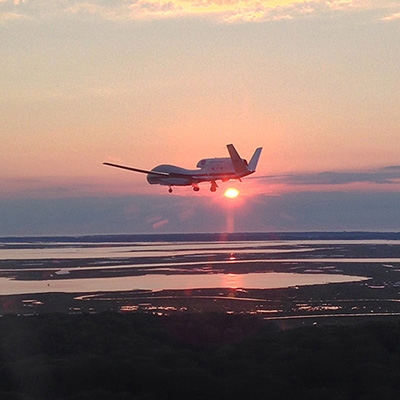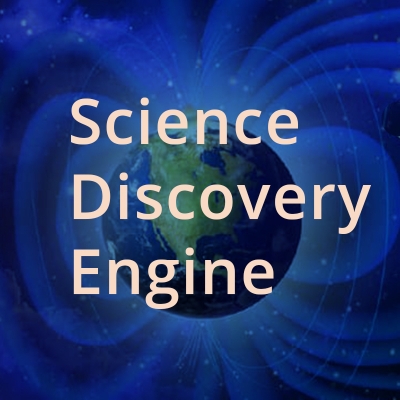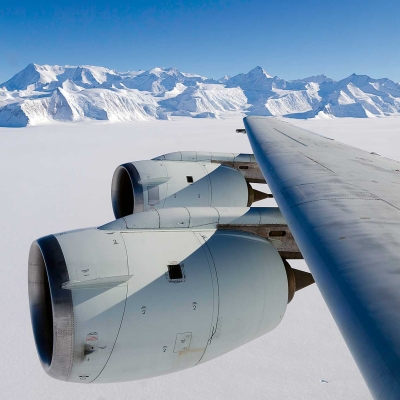Imagine that you have just landed your dream job as the director of a beautiful nature preserve. Vast areas encompassing iconic landscapes will now be under your supervision. You’ve always cared deeply about preserving and protecting the natural world, but now that you’re a decision maker, how exactly will you monitor the water quality of local rivers? Prepare for potential disasters like wildfires? Or protect habitats for endangered wildlife and plant species? You will definitely need data, and lots of it, to be a successful caretaker of the land and its inhabitants.
Many federal civilian agencies rely on data acquired by Earth-observing satellites and aircraft to provide critical information for making real-time and long-term decisions. These organizations often turn to science-driven agencies such as NASA, NOAA, and USGS that fund and operate remote sensing observations and manage access to data products. But who helps determine the types of data and processing tools that might be most useful to a wide variety of federal agencies? The Satellite Needs Working Group (SNWG) is the team that facilitates this decision process. The SNWG is part of an interagency organization called the U.S. Group on Earth Observations (USGEO) that is a subcommittee of the White House National Science and Technology Council’s (NSTC) Committee on the Environment (CE). The SNWG routinely collects the needs for Earth observation measurements and products from over 25 federal civilian agencies. The SNWG routinely collects the Earth observation measurement and product needs of over 25 federal civilian agencies, while the SNWG Management Office (MO) at NASA IMPACT coordinates NASA’s assessment of each submitted need.

In September 2022, the SNWG gave NASA 116 completed surveys from more than 25 agencies, allowing the SNWG MO to kick off NASA’s fourth biennial assessment cycle. Federal agency responses to the SNWG survey have been increasing over the past several years with a 50% spike in submissions during the 2020 and 2022 cycles. Receiving more responses translates to more work for the SNWG MO, but team members such as Jenny Wood, who supports the SNWG MO in her role as the Data Curation for Discovery (DCD) team leader, are happy to see so many agencies actively participating.
"The SNWG assessment is all about seeing an agency’s need and working collaboratively to fill that need. The process brings together some of the brightest minds in science, and it provides a great sense of the ongoing and evolving science that’s happening across a broad community. It’s interesting to see how satellite data is being used in the various agencies that fill out the initial survey, and it’s so meaningful to be even a small part of addressing their data needs."
When NASA receives a survey, it is first sorted into one of nine Earth science thematic areas. Thematic area leads then assign an assessment team to evaluate the survey. The assessment teams, consisting of subject matter experts recruited from NASA, NOAA, and USGS, conduct hour-long interviews with agency teams who submitted surveys. These interviews gather more insight into the motivation and details of each expressed need.

John Troutman is an IMPACT team member who handles informatics in the assessment cycle and participated in many agency interviews. He shared how he appreciates that the interview process gives a voice to Earth science research stakeholders.
"As part of the team supporting the SNWG assessment, one of my main responsibilities is to attend agency interviews and record notes. I find this role enjoyable and meaningful because it has given me the opportunity to learn from some of the nation’s top scientists about the many different topics of research and operational efforts for various U.S. government agencies."
Completing all follow-up interviews with agencies is the first major milestone in each assessment cycle, and the SNWG assessment team celebrated this achievement for the 2022 cycle on February 17. The team conducted a total of 99 agency interviews this cycle. Each interview lasted about an hour, and team members spent considerable time scheduling and preparing for the sessions. According to Katrina Virts, a research scientist with the University of Alabama in Huntsville (UAH) and leader of IMPACT’s SNWG assessment team, integrating new tools into the assessment process enhanced the team’s efficiency.
"One of the major outcomes from our lessons learned retrospective after the 2020 assessment cycle was that we needed some tools to help us handle the growth we’re seeing in agency participation in the SNWG survey. This cycle we are using a workflow management tool called Asana to provide next-step guidance and progress tracking throughout the assessment process. A team from DevelopmentSeed also helped us adapt the Algorithm Publication Tool into the Report Generation Tool that enables assessment teams to collaboratively write their final reports."

The second half of the assessment cycle will involve identifying activities that could be implemented to meet the needs of multiple agencies and writing a summary report about each satellite need that will be returned to the agency. The team anticipates that this stage will be complete by June 2023, wrapping up a total process timeline of eight months. The assessment team will then hand off operations to the SNWG MO to kick off the implementation of approved activities that meet agency needs.
Since the first assessment cycle began in 2016, the SNWG has propelled Earth science research in many ways that have augmented the usefulness and accessibility of data products. When asked to share an example of how SNWG efforts have led to new initiatives, Katrina pointed to data collected by the Harmonized Landsat Sentinel-2 (HLS) project.
"NASA is currently implementing a wide variety of activities to meet federal agency satellite data needs, and many of these activities benefit the larger Earth science community. A prime example is the Harmonized Landsat Sentinel-2 surface reflectance dataset. This product was extended to global coverage as a direct response to agency needs, but scientists all over the world are using and benefitting from HLS! HLS is a great example in another way too: some of the most successful SNWG activities involve combining existing data from multiple satellites into a single product that is easy for users to access and apply."
Essence Raphael, another SNWG assessment team member specializing in informatics, described how she perceives the value of their work in supporting the end users of remote sensing data products.
"Having the opportunity to understand the work that is being done at the various government agencies and meeting some of the people behind that work is what I enjoy most about the SNWG assessment. We get a peek into the important role that they play in keeping the country going, including many aspects that often go unnoticed. The assessment allows for a more accurate understanding of the satellite data products and services that users really need in order to do their work, from monitoring waterfowl habitats to detecting new construction."
In the coming months as SNWG assessment teams distill the feedback collected from their surveys and interviews, they will begin articulating recommendations for what will eventually become operational solutions to enhance Earth observation data products. Everyone from scientists to farmers to park directors ultimately benefit from the work done by this dedicated, industrious team.
More information about IMPACT can be found on the NASA Earthdata and IMPACT project websites.
View LinkedIn or ResearchGate profiles for SNWG MO team members:



